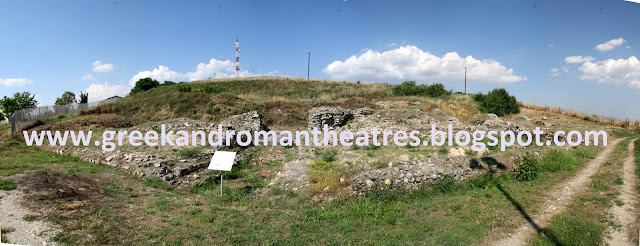COORDENATES: 37º58’30.86’’N
// 23º43’23.28’’E
TIPOLOGY: Roman
odeon, known as Odeon of Agrippa. Urban.
DATE: Last
I B.C.TRANSFORMATIONS: In 150 A.D. was transformed for public lectures.
CAPACITY: 1.000 spectators.
CAVEA: Facing north. Auditorium square 25 x 25 m., 19 rows of seats in 6 cunei. Overall dimensions of the building 51,3 x 43,2 m.
ORCHESTRA: 18,5 m., paved in polychrome marble.
STAGE BUILDING: Pulpitum 25 x 3 m. Proscaenium rectilinear. Scaenae frons is rectilinear too, with three doors. There are three marble statues in the place, well preserved, they were part of the decoration; drum columns too of the Corinthian order.
LOCATION: The Roman odeon of Agrippa is in the Agora.
MY BEDSIDE TABLE: Sear, Frank; “Roman theatres: an architectural study”. Oxford University Press, 2006. // Ciancio Rossetto, Paola; Giuseppina Pisani Sartorio (eds); “Teatri Greci e Romani: alle origini del linguaggio rappresentato”. Rome: SEAT, 1995. // Izenour, George. Roofed Theaters of Classical Antiquity. Yale University Press, 1992.
OUT OF PRINT: In Athens the Gods are still alive, but they are deaf
to the cries of their people... “Because gods perceive future things, men what
is happening now, but wise men perceive approaching things” wrote Philostratus in
his “Kife of Apollonius of Tyana”... but, where are the wise men nowadays?

